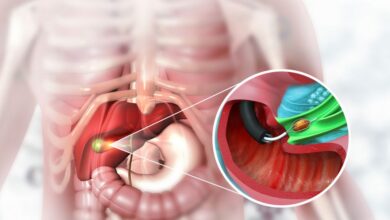Alcohol Consumption Damages Vision

Excessive alcohol consumption is detrimental to health, potentially causing harm to various organs and systems. In cases of alcohol dependence, the most high-risk implications involve the liver and mental health.
Despite this, due to its high toxicity, alcohol can lead to severe impairments in various systems, including the visual system. Many patients struggling with alcohol dependence may experience temporary or even permanent vision disturbances.
**What are the most common vision impairments caused by alcohol consumption?**
After consuming a significant amount of alcohol, considerable blurring of vision may occur. This can be attributed to various factors. Alcohol leads to an increase in blood sugar levels, which can temporarily blur vision. Additionally, excessive alcohol consumption affects the overall functioning of the brain, resulting in delayed transmission of information between the eyes and the brain.
The dilation of pupils under the influence of alcohol is also slowed. This leads to a “loss of contrast,” meaning that the eyes cannot distinguish between certain shades and colors. This can complicate the ability to judge distances between objects at various distances. According to studies, even at low blood alcohol levels of 0.05%, contrast perceptions are reduced by up to 30%. This is a significant reason why driving under the influence of alcohol is extremely dangerous.
In the short term, excessive alcohol consumption can affect peripheral vision, resulting in what is known as tunnel vision. In tunnel vision, patients see only what is directly in front of them. Along with significantly slower reaction times caused by the inhibitory effect of alcohol, this blurred tunnel vision is another reason why driving under the influence is particularly hazardous.
Regular alcohol consumption can also cause symptoms such as dry eyes and involuntary twitching of the eyelid, known as myokymia. The sensation of dryness and irritation in the eyes is due to the diuretic properties of alcohol, leading to increased urination and subsequent dehydration, including the eyes. The loss of fluids is a cause of frequent eye pain after alcohol consumption. In some cases, inflammation of the visual apparatus may occur, resulting in a burning and itching sensation in the eyes, as well as the onset of migraines and extreme sensitivity to light.
The intake of large amounts of alcohol can lead to intense redness of the white part of the eye – the sclera. This is due to the dilation of vessels observed along the eyeball. The filling of these vessels causes the red and bloodshot appearance of the eyes after alcohol consumption.
The redness of the eyes after alcohol consumption is not a long-term consequence. They will return to their normal color after the body eliminates the alcohol. The discomfort caused by dry eyes is also temporary but can occur even after consuming very small amounts of alcohol.
One of the most serious conditions following chronic alcohol abuse is permanent vision loss. It can result from age-related macular degeneration and optic neuropathy associated with alcohol abuse. According to studies, the risk of developing these conditions is significantly higher with excessive alcohol consumption.
Blindness due to alcohol abuse is not very common but is possible. Excessive alcohol intake can lead to reduced peripheral vision, weakened eye-moving muscles, corneal thinning, and loss of color vision. These factors can contribute to permanent vision loss.
Excessive alcohol consumption can also increase the risk of other ophthalmological disorders. These include central retinal vein occlusion, central serous chorioretinopathy, cataracts, diabetic retinopathy, and glaucoma.
One standard alcoholic drink usually increases the alcohol content in the blood by 0.02-0.03% and does not affect vision. This content needs to be raised to approximately 0.08-0.09% to impact vision, motor function, reaction time, and physical coordination. This percentage can be reached after consuming two drinks within an hour.

